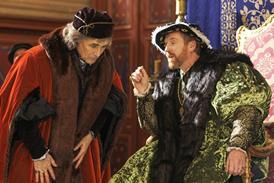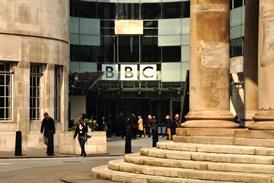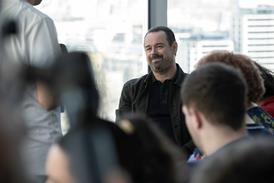April 1912: the RMS Titanic's maiden voyage comes to an abrupt and tragic end. It was an event which would resonate across generations and cultures, thanks to a couple of Hollywood blockbusters along the way. Disasters of this kind just don't get more iconic; it was the biggest ship of its time and over half the people on board died.
There have been countless Titanic documentaries, so this one had to be different. Exec producer Stuart Carter insisted that our approach needed to be about the unusual confluence of events. The production would juxtapose the birth of Titanic with the birth of “the iceberg”, charting its progress as it travelled into the shipping lane and its eventual collision with the Titanic.
Back in February, before the project had officially started I interviewed Millvina Dean, the only remaining survivor of the Titanic disaster - a humbling experience. Little did I know that over the next few months I would embark on an adventure of epic proportions; travelling across the globe to find the origins of the “Titanic” iceberg in West Greenland, flying with the International Ice Patrol on a mission and clambering across glaciers. To do this we used all manner of transport from a Hercules C-130, a Sikorsky 61 and a ferry, to a Zodiac boat and a steam ship. Our aim was to collect the elements needed to recount the chain of events leading up to the Titanic's demise and explain how the most technologically advanced ship of its day ploughed straight into an iceberg.
Just two weeks into production, director Patrick Reams was thrown in at the deep end as the International Ice Patrol invited us to join them on their patrol looking for icebergs in the freezing mid Atlantic. On day one, the Hercules C-130 had engine problems, so we decided to charter a boat, taking the commander and a couple of his people with us. Eventually we caught a glimpse of our iceberg. We all got very excited and shot the hell out of it, in-between incessant puking over the side by a member of our team who will remain nameless.
On the journey back, the weather took a turn for the worse. Icy cold salt water splashed in our faces as we clung onto the boat for dear life for the 40-minute journey back to St Johns. Maybe the Zodiac was not such a good idea all.
A day later we finally got to fly in the Hercules C-130 which involved eight hours in a very dark plane, with only two windows, neither of which we could use. As we flew over the spot where the Titanic had sunk, the back of the C-130 opened to release wreaths over the wreck site. The wreaths had been blessed a few days earlier at an annual ceremony at the Titanic victims' grave site in Halifax, Nova Scotia. For the rest of the eight-hour journey we were looking for icebergs but lots of cloud cover meant we only saw one. It was beginning to dawn on us how unlikely the Titanic's encounter with the fatal iceberg really was.
A couple of months later we had a script and it was time to head to Montreal. The film was a Canadian co-pro, so we'd shoot our drama reconstructions there with our partner, Handel Productions. The challenge was obvious - a nine-day shoot for the drama reconstructions with a budget that was probably the equivalent of a petty cash float on Cameron's movie. Montreal is a beautiful city but our search for a period ship proved fruitless, which meant reliance on CGI and a green-screen studio. Thankfully we had Red Vision and C4 Studios onboard. What worked to our advantage was the writers' strike in the USA, which meant we were able to assemble an excellent drama crew.
A few weeks into the edit we decided a shoot in Greenland was in order to get more footage of epic icebergs to recreate our Titanic iceberg. We arrived on the West Greenland coast and there were icebergs like huge Barbara Hepworth sculptures drifting past my hotel window.
The morning after we took a boat trip to the Eqi glacier, passing humpback whales and cutting through thick ice sheets, where we saw some stunning 'bergs as they journeyed south towards Iceberg Alley.
So, with the help of planes, a helicopter and several boats we had all the ingredients required to tell the tragic story of engineering failure, human error, and the iceberg that travelled farther south than anyone could ever have thought possible.
The Unsinkable Titanic is a co-production by Pioneer Productions and Handel Productions for Channel 4. Its airs on Monday 20 October at 9pm
Vicky Matthews: My tricks of the trade
CGI supervision on location. This is essential - some of our plate-shot locations weren't as perfect as we would have liked so it was vital to get expert advice on whether a shot would work.
A second unit to shoot cutaways when the number of drama shoot days is scarce. This approach bought us extra time and footage on previous drama docs and would have helped us on this one.
My Macbook - I can download assembled rushes from the edit, cut together casting clips and import location stills. With my laptop my office can be absolutely anywhere in the world.




























No comments yet